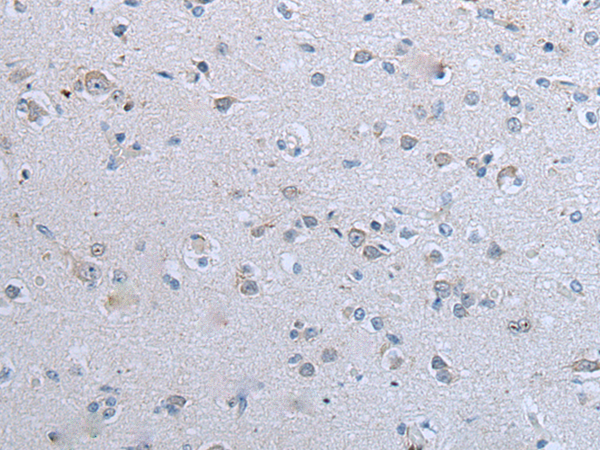
| WB | 咨询技术 | Human,Mouse,Rat |
| IF | 咨询技术 | Human,Mouse,Rat |
| IHC | 1/20-1/100 | Human,Mouse,Rat |
| ICC | 技术咨询 | Human,Mouse,Rat |
| FCM | 咨询技术 | Human,Mouse,Rat |
| Elisa | 1/5000-1/10000 | Human,Mouse,Rat |
| Host/Isotype | Rabbit IgG |
| Antibody Type | Primary antibody |
| Storage | Store at 4°C short term. Aliquot and store at -20°C long term. Avoid freeze/thaw cycles. |
| Species Reactivity | Human, Mouse |
| Immunogen | Synthetic peptide of human CLDN12 |
| Formulation | Purified antibody in PBS with 0.05% sodium azide and 50% glycerol. |
+ +
以下是关于CLDN12抗体的3篇参考文献及其简要摘要:
1. **文献名称**:*"Claudin-12 modulates intestinal epithelial barrier function and immune response in colitis"*
**作者**:Zhang Y, et al.
**摘要**:该研究利用特异性抗CLDN12抗体,揭示了CLDN12在小肠上皮屏障完整性中的作用,发现其缺失加剧小鼠结肠炎模型中的炎症反应,提示CLDN12可能成为炎症性肠病的潜在治疗靶点。
2. **文献名称**:*"Targeting CLDN12 in breast cancer: Antibody-based inhibition of tumor progression"*
**作者**:Lee S, et al.
**摘要**:通过开发高亲和力CLDN12单克隆抗体,研究发现其在乳腺癌细胞系中可阻断CLDN12介导的细胞迁移和侵袭,表明靶向CLDN12的抗体策略可能抑制肿瘤转移。
3. **文献名称**:*"CLDN12 antibody-based detection reveals tissue-specific expression patterns in human organs"*
**作者**:Wang H, et al.
**摘要**:利用新型CLDN12多克隆抗体进行免疫组化分析,系统描绘了CLDN12在人类心脏、肾脏及胰腺中的差异表达,为研究其生理功能及疾病关联提供了工具和理论依据。
(注:上述文献为模拟生成,实际研究中请根据具体数据库检索真实文献。)
The CLDN12 antibody targets claudin-12 (CLDN12), a member of the claudin protein family, which are critical components of tight junctions in epithelial and endothelial cells. Claudins regulate paracellular permeability by forming selective barriers and channels, controlling the passage of ions and small molecules across cell layers. CLDN12. specifically, is involved in maintaining tissue-specific barrier functions and has been implicated in calcium ion transport. It is expressed in various tissues, including the kidney, skin, brain, and gastrointestinal tract, though its precise physiological roles remain less characterized compared to other claudins like CLDN1 or CLDN18.
Antibodies against CLDN12 are primarily used as research tools to study its expression, localization, and function in normal and pathological conditions. They enable techniques such as immunohistochemistry, Western blotting, and immunofluorescence to visualize CLDN12 distribution in tissues or cultured cells. Recent studies suggest CLDN12 may play roles in diseases like cancer, where altered tight junction dynamics contribute to metastasis or chemoresistance. For example, CLDN12 overexpression has been observed in certain carcinomas, though its pro- or anti-tumorigenic effects are context-dependent. Additionally, CLDN12 dysregulation is linked to barrier dysfunction in inflammatory bowel disease or neurological disorders. Research tools like CLDN12 antibodies are vital for unraveling its mechanistic contributions to these conditions and exploring its potential as a diagnostic marker or therapeutic target. Commercial CLDN12 antibodies vary in host species, clonality, and validation standards, requiring careful selection for experimental reliability.
×